 Originally published February 16, 2001, in Comics Buyer’s Guide #1422
Originally published February 16, 2001, in Comics Buyer’s Guide #1422
’Tennnnn hut! Eyes front, maggots. The following e-mail (I hardly get regular mail anymore) arrived from Commander R.A. Benson, USNR:
I am writing you in reference to your column which ran in in the 02 February issue (topic: retcons and “stetcons”), but not in direct comment upon your words. Rather, the photo from Superman #166 which complemented your article has resurrected an issue I’ve had with comics professionals for some time.
I understand you had no direct involvement with the panel or the issue of Superman in question, nor with any of the criticism I am about to discuss. But I come to you for your professional opinion, based upon your experience and knowledge of the field.
I am a career military man, twenty-two plus years in the U.S. Navy, and conservative in political opinion. I recognize that you are more liberal; but you are also honest and, as I said, employ logic in your opinions. That’s another reason I come to you with this, since you are from “the other side”, so to speak–and I think that perspective will be helpful to me.
As I said, the art in question highlighted two long-standing issues with me.
The first is the more egregious, as I am concerned. Even though it is not my service, I can readily spot that the uniforms drawn on General Rock and Major Lane are far from accurate. This inaccuracy in depicting military uniforms has continued for decades. And believe me, the usual depiction of Navy uniforms has been even worse. (The only comic artists to be accurate in their depiction of military uniforms were Curt Swan, Murphy Anderson, and Kurt Schaffenberger–all of whom are either sadly deceased or no longer doing comics on a regular basis.)
Now, I know enough about the comics illustration profession to know that artists have a reference file. If an artist wants to draw, say, the Empire State Building, he refers to a photo of the actual building so he can draw it accurately. The same thing with automobiles, women’s clothing, specialized furniture, and so forth. Anything beyond the generic, the professional artist uses a reference.
So why does it seem that comics artists never use a reference for military uniforms? They are easy enough to come by. For decades, World Book Encyclopedia has featured full-length photos of each armed service’s uniforms under their individual listings. There are other, commonly available sources. Especially with today’s availability of the Internet. Instead, it seems that every comics artist for the past twenty years has “winged it” when drawing military personnel.
The other item from that reprinted panel: the copy reads that Major Sam Lane is Luthor’s choice for Secretary of Defense, and the art supports the presentation that Major Lane is an active-duty Army officer. Obviously, the writer was under the impression that a military man serves in that position. According to law, active-duty military personnel may not serve as one of the Cabinet secretaries or any of the service secretaries. (They may be members of the Reserve, so long as they are not in a permanent active-duty status, such as I am.) This is in keeping with the Founding Fathers’ desire to deny the possibility of a military take-over by ensuring that the military remains under civilian control. In all of United States history, there has been only one exception to this: in 1948, General of the Army (i.e., five-star rank) George C. Marshall was appointed by Truman as Secretary of State. There are no more five-star officers, but at the time, the law specified that officers of five-star rank were permanently on active duty. It required a special act passed by Congress to permit GEN Marshall to hold the post.
This is not the only occurrence of such obvious military errors. (I remember one short-lived series which had an Army lieutenant taking orders from an Army sergeant major and calling him “sir”–scarcely likely in real life.) I thought writers did basic research into areas with which they were unfamiliar. At least, the professional ones do. I recognize that Wombat-Man #42 isn’t in the same league as Jurassic Park, and the time constraints are tighter–but isn’t (or shouldn’t it be that) basic research part of the professional comics writer’s job?
The only other field which receives this kind of short-shrift inaccuracy is–as Bob Ingersol’s column, The Law is an Úš, so often reminds us–is the law. But there genuinely seems to be a strong bias in comics toward getting anything in the military correct.
Is this just carelessness on the part of comics writers/artists, either routine or unavoidable? Or–and I only pose this as a possible reason, not a personally held belief–is it that most comics professionals hold liberal philosophies and tend to hold the military in low regard; therefore, they don’t care enough to concern themselves with getting the military right? That they don’t have military experience doesn’t obviate the fact that they can research at least these basic facts; thus, the only reason I can see for such an inaccurate depiction of the military is that of personal apathy or bias.
As I said, I am not necessarily making this argument. I am simply pointing out a long-standing phenomenon and asking you, sir, in professional opinion, what might cause this. This is why your liberal perspective and honesty will help in providing me an accurate answer.
I’m not standing on a soap-box here. Of course, I’d like to see more accuracy in depicting the military in comics; but I’m not on a crusade. Nor does it necessarily bother me when military people are depicted as bad guys. These are, for all their entertainment value, simply comic books. I was just wondering why the military seems not to receive the same care and research for accuracy as other aspects depicted in comics.
You brings up two interesting points, but answering the overall question first: No, I hardly think there’s some sort of bias against the military. One should never ascribe to hostility or contempt that which can be chalked up to simple ignorance. As you say, many (if not most) writers working today—not to mention editors—have never served in the military, and derive their knowledge from such sources as M*A*S*H or Officer and a Gentleman. We may not be able to tell you accurately how many men there are in a garrison, but gosh darn it, we know that army surgeons are wacky and the only two things that ever come out of Oklahoma are steers and queers.
In terms of visual reference, it’s always been my feeling that somebody should be endeavoring to get things right. In the case of Supergirl, for example, I know that Leonard Kirk is obsessive about detail, and so I’m content to toss in whatever I want into a story because I know he’s going to do the legwork, whether I supply it or not. For instance, an upcoming issue features a sequence in ancient Rome. I was able to provide Leonard with a detailed description of Caligula, but I had absolutely no clue what a Roman marketplace looked like, and left it to Leonard to make it convincing. As a writer you can do that when you have a regular artist and a solid working relationship.
On the other hand, for the Reed Richards limited series I did for Marvel, the final issue was set in Egypt and heavily focused on the Sphinx. I provided not only visual reference, but also websites where the artist could see it for himself, because I didn’t want to take it for granted that the artist would have this info at his fingertips. Nor did I think it fair to make him start from scratch.
Because it’s always been my feeling that the artist should be the last person in the chain to have to find the reference. I think it should start with the writer. Writers should allow for the notion that no matter what they’re writing about, someone out there is going to be an expert in it, and the expert is entitled to read the story with as much enjoyment as the person who knows jack-all on the subject. If you’re going to do it, do it right. The second person in the “chain” should be the editor. Either the editor or assistant editor should serve not only as a fact checker (to make sure the writer got it right) but also should be providing reference where necessary. Ideally, I think, the artist should get a nice package with everything he needs to draw the story so he can go ahead and start penciling the thing.
Of course, it has to be a two-way street. I know one writer who set a sequence in a French bistro and provided visual reference for the artist as to what a nice little sidewalk bistro looked like. The artist couldn’t be bothered to study the reference and copy it. Instead of getting two characters sitting outside in Paris, the writer got the characters sitting indoors at a Burger King, because that’s what the artist felt like drawing. Plus pencilers get to deal with their own aggravations. For instance, there was one inker who was known in the industry as “the man who erased armies,” because when given a crowd scene he simply couldn’t be bothered to ink them in. So sometimes you can go to a lot of effort and a lazy artist will deftly torpedo it.
In regards to your second point: Once again, it comes down to the writer and editor. A writer should try to get it right, and the ultimate responsibility comes down to the editor. The problem for the writer, though, is that he has to know there’s potential to get it wrong. If a writer is scripting, say, a, a person having a heart attack, he’s aware of the limitations of his knowledge in that regard, and knows whether to do research on it or not, as well as any ancillary info that might be required. For instance, I once called a drugstore to get the label correct for a vial of nitro glycerin pills that a heart patient was holding.
On the other hand, if the writer simply doesn’t know there’s potential for error, it won’t occur to him to research it. It’s hardly limited to comics. The writer of the film Ransom obviously didn’t know that New York City police officers are forbidden, by law, to accept reward money in the performance of their duties, but part of the film’s plot hinges upon it. In the marvelous little comedy Sweet Liberty, Alan Alda portrays a historian who becomes progressively more frustrated when a movie director carelessly riddles the film of his historically-accurate book with mistake after mistake.
In the case of Superman, it’s entirely possible that the writer was unaware that an active-duty service man can’t serve in the cabinet. I sure know that I didn’t know that, and had I been conceiving the storyline, I would likely have made the same mistake. Sure, it’s possible to make excuses for it… the first and foremost being that maybe in the DC Universe, the law works differently. I mean, hëll, let’s face it, in the real world all these costumed vigilantes simply wouldn’t be allowed to operate, period. Superman would be shot at every time he entered foreign airspace without obtaining permission.
Ultimately, though, that’s a nifty excuse, but it’s still just an excuse. And it’s hardly limited to the military; you’re just more aware of it because you’re in the military. I’m sure writers also manage to annoy doctors, lawyers, cops, firemen… anybody and everybody whose professions show up now and again. Bottom line, it’s the job of the creative personnel to get it right whenever possible… and the job of the fans to alert them to mistakes so—at the very least—we can get it right in the future. But no single profession should ever take it personally. We are, in the final analysis, equal opportunity screw-ups.
(Peter David, writer of stuff, can be written to at Second Age, Inc., PO Box 239, Bayport, NY 11705.)
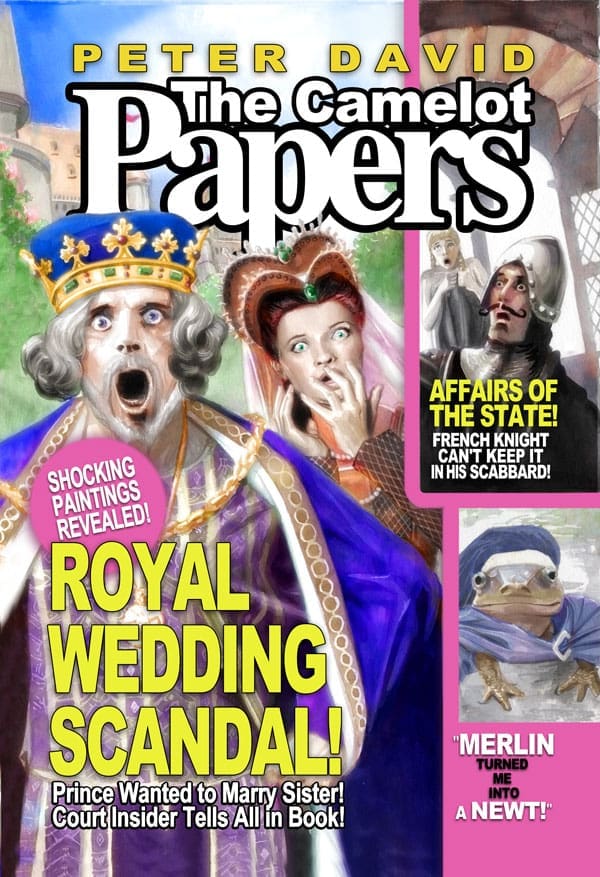
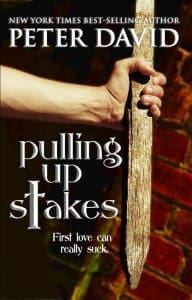
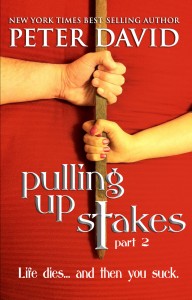
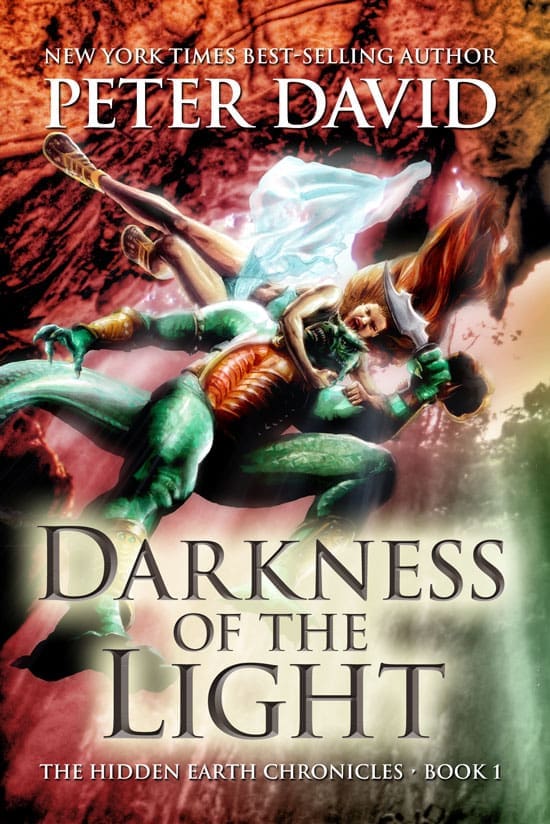
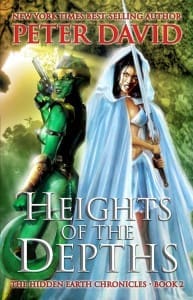
Yes, fictional depictions of every career get stuff wrong. Computer programming, race car driving and other stuff all get mangled in movies, TV, and everything else. There are exceptions, I’ve talked to several doctors who loved Scrubs simply because it got so much right about hospitals. However, those kinds of shows are rare.
I will give a certain amount of leeway on that, though. Sometimes inaccuracies really does make the story better. Actual computer programming looks exactly the same as someone writing an e-mail to his grandmother. Either way, it’s just a guy at a desk. So I get why they jazz it up. It’s still going to annoy me because I’m so familiar with what it’s actually like, but I don’t expect others to get upset about it.
Also, there’s only so much anyone can do on a deadline. The exterior of the Empire State Building? Yes, a comic artist has to get that right. The interior of a third floor office? It’d be good if someone checked to make sure that there actually *are* offices on the third floor, but it’s seriously not worth anyone’s time to get photo reference and try to draw that accurately. Similarly, it’s great that The Big Bang Theory has so much science in it, but we can’t expect the writers to actual get doctorates in Physics.
So, like a lot of things, there’s a balance.
Once in a while, I see a movie and hope that computer technicians are watching it, too, so they can imitate the visual design in the next upgrade.
Alas, TBBT sometimes gets geek stuff wrong too. In the episode where the guys and women played D&D together, they kept rolling to see what the players did. Anyone who’s played D&D even *once* knows you decide what to do yourself, then roll to see if you succeed or fail. They really should have gotten that right.
I don’t remember that episode. Do you know which season that was?
Are you thinking of the episode where Sheldon decided to roll dice to decide *everything* he was going to do, even when he would go to the bathroom?
[replying to Jason] The episode was the season 6 one “The Love Spell Potential,” where the women had their trip to Vegas cut short and wound up playing D&D with the guys. It featured Howard doing a *ton* of celebrity voices in the game and Sleldon and Amy as the targets of a love spell at the end.
And Sheldon’s dice-rolling to decide minor things was short lived, as one would expect from such a control freak as Sheldon.
I just rewatched that episode. They did not roll to see what the players did. They rolled for attacks, like a normal game.
Actually, I have rolled dice to decide on courses of action many times, both as a player and a GM. Rather than stare into space pondering my next move, rolling dice makes it look more like I’m considering probabilities than trying to pull a rabbit out of my hat. And as a GM, one of my favorite tricks is to respond to the most off-the-wall ideas from the players by rolling as if I’ve already planned for such a contingency and know their chances of success/failure before they’ve even thought of trying it.
Fire sprinklers. Each sprinkler has either a fluid filled glass bulb or a heat sensitive piece of metal holding in a plug. When the heat (from a fire) causes either one of these to fail then that ONE sprinkler will discharge water. How many movies or TV shows show someone setting off every sprinkler in a building with a lighter?
I worked for decades on research related to the fire service. The errors in that area begin with the use of the term firemen. I have never heard anyone in the fire service refer to its members as anything but firefighters or fire officers. Errors related to fire include the depiction of a serious fire with lots of flames all around a room but little smoke and the suggestion that fire only kills through contact with flames.
I have also noted a number of errors in depicting the powers of Congress, which do not include the ability to arrest anyone or charge them with a crime. Congress can pass legislation, investigate, act on appointments, impeach certain federal officials, but they have no executive powers or role in the criminal justice system.
— John Hall
Commander Benson can be forgiven for being unawares of Albert Weinberg, since this Franco/Belgian writer/artist’s works have not been translated into English, but he strove for such accuracy in his best known comic book series, DAN COOPER – about the adventures of a Canadian Air Force pilot – that he was welcomed with open arms at many air bases such that he could have first hand looks at the hardware (even inside front line fighter planes), the people and the way of life and thus get the details right. Pity more artists/writers have the luxury of such time intensive resources.
As for your looking for a heart medicine bottle label, Edgar P. Jacobs (creator and initial writer/artist of the BLAKE AND MORTIMER series), he once held up production of the strip because, in those pre-Internet days, he had to mail a request to a friend in Japan to send him a photo of a Japanese garbage can to use as reference in a back alley brawl sequence where Mortimer improvises a garbage can lid as a shield. He was that much of a stickler for details. One compares this with an X-MEN oopsie where the artist had them riding in an old-style steam locomotive train in Ireland … which had converted to electric rail several years earlier and the latter doesn’t quite measure up.
Not sure I approve of retroactively changing artwork, though, as Hergé, of TINTIN fame once did when he redrew an entire page for the hardcover reprint edition after he’d had it pointed out that he’d gotten a country’s license plates wrong.
No one is perfect, though and one can only hope the mistakes and screw ups don’t get more frequent in the industry as they seem to be in the newspaper world where proof reading is a dying art as witness such howlers as one sports writer referring to “Philadelphia’s 7-3 victory against the Flyers” ?!?
“Pity more artists/writers have the luxury of such time intensive resources.”
There should be a “don’t” in there. Speaking of ‘proofreading’ …
Military stuff – yeah. As ex-Navy, i notice ’em – especially when a Navy character who is called “Captain” (not as a ship’s Captain, but as rank) is depicted with Army/Navy/Marine captain’s collar insignia, than Navy (where a captain is the equivalent of a colonel in the other services).
But i get annoyed with the portrayal of trains and of railroads in general, even more.
For a long time, i would see artists using an old Lionel catalog shot for “reference” – the F3 diesel, whether it was appropriate for time, location or use – easily spottable because it would be in the same “beauty shot” three-quarter view from the Lionel catalogs of the early Fifties.
Not only was it the wrong locomotive for the wrong time – it kept turning up for years after most cab engines had been retired – but out of proportion, because the Lionel locomotive was significantly shorter than it should have been in order to operate on the sharp curves of tinplate track.
========
In the case of Supergirl, i remember being delighted when Cutter’s car was an obsessively-accurately-portrayed British classic (I think it was a Mk 2 Austin-Healey Sprite, which i had once owned).
One of the things that makes me laugh the hardest in Groundhog Day is when Larry talks about how his job is “just hold a camera and point at stuff, but there is a heck of a lot more to it than just that.” There is slightly more to it, like knowing what stuff I should point at, but beyond that….
On the subject of The Big Bang Theory, there’s a scene in the teaser of an early episode where the guys invite Penny to join them in watching a Superman movie marathon. In describing the scene where Supes saved Lois when she fell from the helicopter in the first film, Sheldon says he swooped down to catch her.
The writer of the episode was probably going from memory when he or she had Sheldon say that. What’s amusing and ironic in retrospect about that inaccuracy (Supes flew up from street level to catch Lois) is that it’s Sheldon who gets the details of Supes’ rescue wrong. At the time that episode aired, his character obviously hadn’t been fleshed out and certain personality traits hadn’t been established. Because the detail-oriented Sheldon who evolved later would never have gotten the facts of the rescue scene wrong. What’s more, he’d have known some minutia about some extra barely visible on camera that no one else would have cared about.
And if the Sheldon that came to be had described the scene inaccurately, the others– especially Leonard– would have taken great pleasure in pointing out his error.
But that Big Bang Theory teaser wasn’t about the minutia of the helicopter rescue scene in Superman: The Movie. That was just the “MacGuffin” that got Sheldon and Leonard into an argument about Superman’s powers, which culminated with the teaser’s punchline: Raj’s observation that, “the pretty girl (Penny) left.”
I’ll admit I find it slightly annoying that the writer of that episode didn’t double check whether Superman did, indeed, swoop down to catch Lois, but I’m actually more “disappointed” in the “unrealized opportunity” of that scene, given who Sheldon later became. I think it would have been funnier if the later, “I know everything; I have an eidetic memory; I’m always right” Sheldon had incorrectly described Supes’ actions, leading to a different argument with Leonard.
End result, Penny still would have left.
Rick.
Oh, there’s plenty more than that he gets wrong. He gets the Green Lantern oath wrong, which irked me to no end.
Though, iirc, it was Leonard who was stupidly uninformed regarding Spider-Man titles (neglecting to mention Spectacular, but mentioning Sensational, for instance, or something similarly nonsensical)